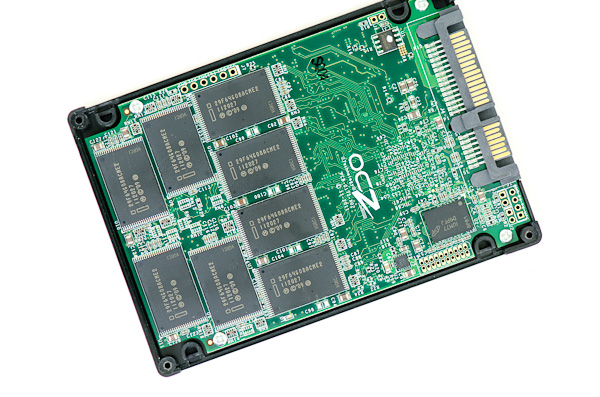OCZ Octane 128GB SSD Review
by Anand Lal Shimpi on December 28, 2011 12:27 AM ESTFinal Words
I'm still trying to get my hands on smaller capacities of other newer SSDs to add them to our growing database of SSD performance data. For now it looks like the Octane is a good solution for typical desktop users, even at its 128GB capacity. Performance in those tests is once again competitive with SandForce drives. It's in write heavy workloads that the reduction in number of available NAND die penalizes the Octane. The distinction is as simple as that: if you're running write heavy workloads, the higher capacity Octanes remain competitive where the 128GB falls off. For most desktop/notebook users however, the 128GB drive should be among the best.
I still wouldn't recommend the Octane for Mac OS X use without TRIM. SandForce is still best suited for the TRIM-less environments, although I've been quite pleased with the Samsung SSD 830 under OS X for the past few months as well.
My recommendation continues to be that you wait-and-see. The Octane has only been publicly available for a month now, it'll be several more before we get a good idea of how well these drives are holding up in the myriad of system configurations and usage models that are out there. So far, so good though.











38 Comments
View All Comments
Xpage - Wednesday, December 28, 2011 - link
Thank you for the review on a model that is more down to earth on its cost.JonnyDough - Wednesday, December 28, 2011 - link
I second that. I'm glad you went with a lower capacity model. I wish you had included a first generation Vertex drive, along with a second for scaling. It may be SATA II, but I'm still using Vertex 2 drives and I would like to see just how modern drives compare.Also, it seems to me that the best middle of the road performer here is Patriot's Wildfire drive.
realjetavenger - Wednesday, December 28, 2011 - link
I was thinking the same thing. The Kingston HyperX and Patriot Wildfire are at the top of most of the charts and seem to be the real winners here.harshw - Wednesday, December 28, 2011 - link
Hi AnandWill you be reviewing mSATA SSDs at any point ? It's the same thing with them - limited PCB space meaning 2-4 NAND chips => much less performance. I'm looking to add some mSATA SSDs to my HTPC and laptop, but where the vendors advertise insane performance, the forums tell another story :)
Rick83 - Wednesday, December 28, 2011 - link
A little tip: For small devices go for SLC NAND. That way you still get decent performance (and life-time - with little space there are less replacement blocks, and only so much load-leveling you can do) out of small devices, while only paying about ~2.5x as much - which at the small volumes isn't so dramatic.harshw - Wednesday, December 28, 2011 - link
The cheapest for 20GB SLC mSATA is £100 - that's the Intel 311 series. Is there a 40GB SLC mSATA ? Can't seem to find anyIn any case a Kingston mSATA 60GB with the Phison controller nets for £75 and the OCZ Nocti 60GB with the Sandforce controller is £90~£100. The OCZ Strata 60GB with the Indilinx Eco controller is also around £75 but since there are no reviews and proper tests, can't really figure out which one to buy ...
Rick83 - Saturday, January 7, 2012 - link
Small devices for me are in fact up to 20 GB (I'm running two 8GB SSDs, where MLC might fall short). Above that, there is usually enough space to do decent wear leveling. (Wear is a function of the amount of writes per write block, hence the same amount of data written to a small drive over the same time, means more writes per cell, given the same level of write amplification)It depends on your use case as well - for hybrid-caching or silencing down a HDD by putting the swap file on flash, SLC is probably the better choice, but for portable applications, MLC always wins due to size being more important than performance.
Ammaross - Wednesday, December 28, 2011 - link
They've already benched the Intel mSATA devices. I'd go with MLC simply for cost effective reasons. In a year or two if you even are remotely worried about your NAND life, go buy another drive with the now twice the capacity and half the price.... (btw, NAND lifespan isn't near as important as it used to be. You're far more likely to drop-kick your Atom CPU well before your NAND dies).Samus - Wednesday, December 28, 2011 - link
You are so sexy!Tchamber - Wednesday, December 28, 2011 - link
I liked your comment about how many Velociraptors we could RAID for the price of an SSD. I have two 300gig 'Raptors in my desktop, backed by an i7 970. Funny thing, my Core 2 Quad latop with and Intel SSD 320 120gig feels every bit as snappy, even better when booting or loading PSE. I should put the SSD in my desktop for a day and see what my file transfers would be.